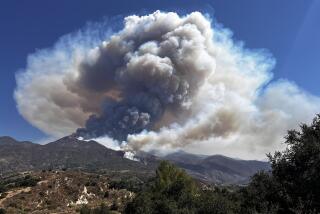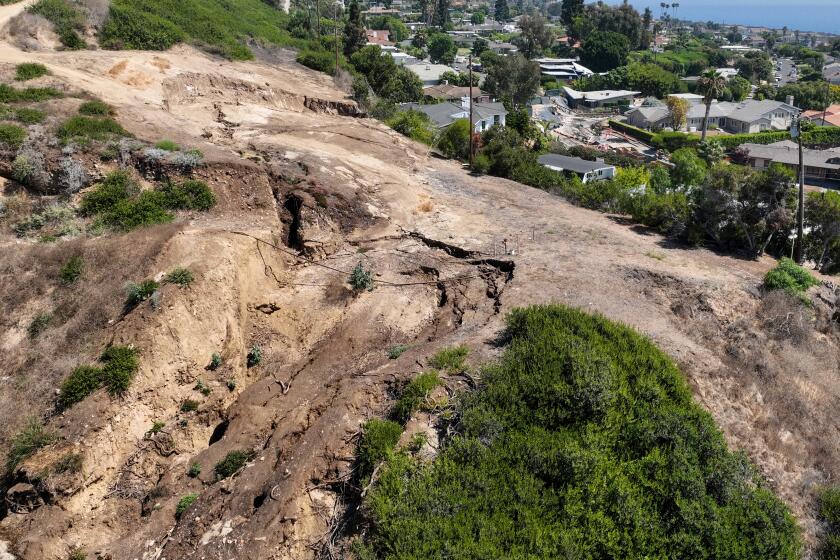Fire season comes early
The 28,000-acre Springs fire spread swiftly over arid territory at a time of year when Southern Californians have barely started thinking about the coming fire season. Typically, the hills around us are still green in mid-spring. But this year, after a particularly rain-starved winter, the ubiquitous nonnative grasses that have taken over so much of the region’s open spaces browned out in April.
The Springs fire obviously caught the region unprepared. One landowner said he had been just about to trim back the plants on his land. In past years, that might have been fine; this year, the usual won’t work. And the respite provided by this week’s rain shouldn’t fool anyone. We’re in the midst of fire season, a good three months early.
This is the sort of scenario that climate scientists have been warning us about for decades — off-kilter weather patterns, increasing dryness in Southern California and, with it, added fire risk. Whether or not last week’s confluence of parched hills, hot days and fast winds was caused by climate change, the dryness of the vegetation points to a wildfire threat that won’t wait for the usual Southern Californian procrastination over thinning plants.
Municipalities and the state — as well as the federal government, with its large land holdings in California — should take swift and dramatic action to prevent a catastrophic fire year. The state is working on a long-term fire plan, but the need to clear tinder-like weeds is immediate.
The prevailing wisdom on fire protection is to create a buffer of at least 100 feet of cleared land between developed areas and nearby wilderness, a space that firefighters can easily defend. Private landowners must clear their own land or pay a high price to have the government do it for them. Municipalities should step up their enforcement, making sure landowners are getting the work done in a timely way, but government also must get to work whacking dry, nonnative vegetation down to the ground on its own land. Thinning of native plants in those crucial areas might be needed as well, but over the long term, the region will face less fire danger if native plants are not removed. Invasive weeds quickly take over what was once native habitat and provide more combustible fuel earlier during dry seasons.
In some ways, the Springs fire let the region off easy. At 80% containment, some houses were damaged and a few people injured, but no homes were destroyed and no one died. We can’t eliminate fire in a region where flames were part of the landscape long before sprawl was, but with quick and aggressive action, we can limit fire’s terrible power.
More to Read
A cure for the common opinion
Get thought-provoking perspectives with our weekly newsletter.
You may occasionally receive promotional content from the Los Angeles Times.










